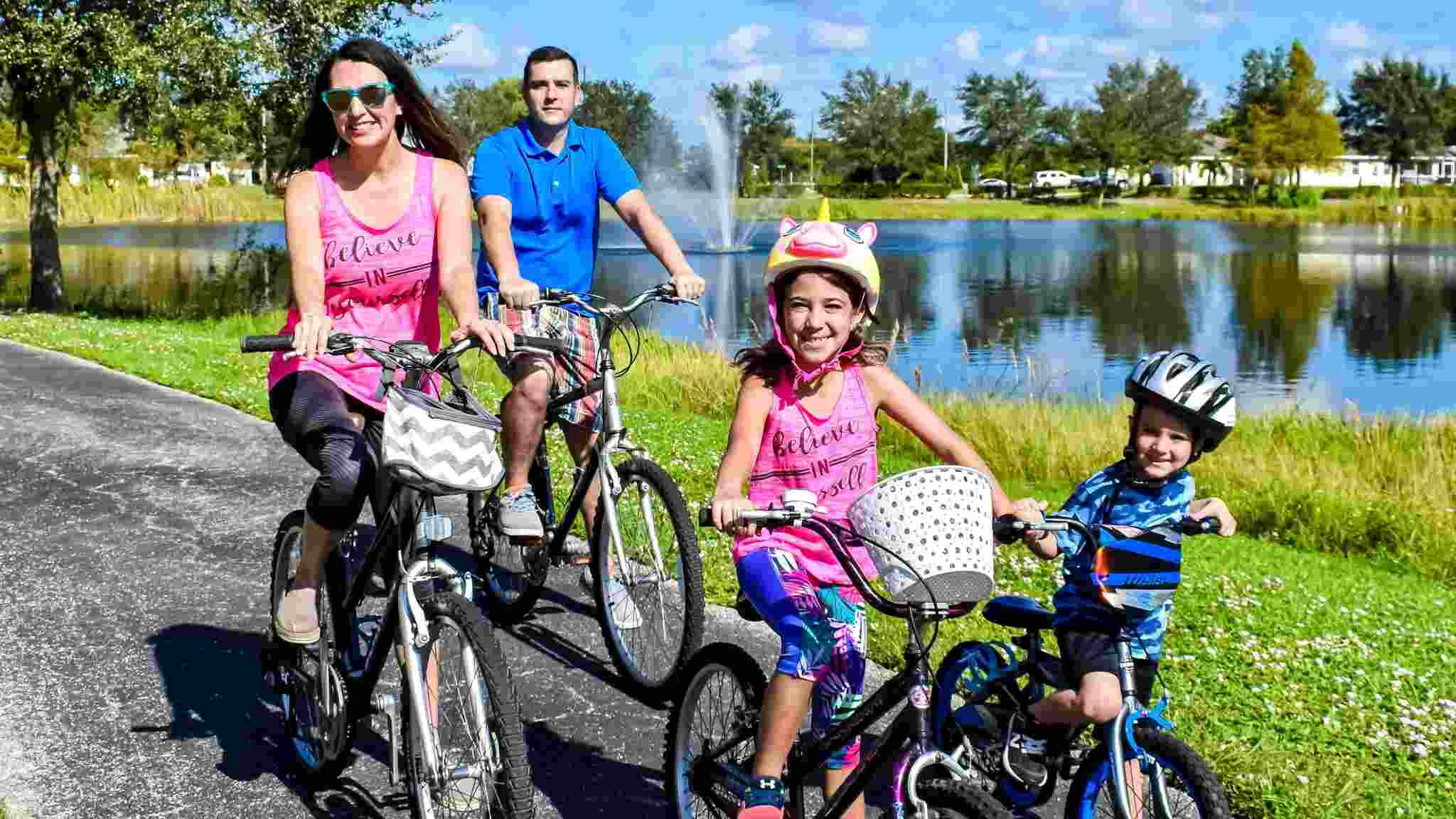How a City Built Without Sidewalks Won an Award for Mobility
By Polco on March 8, 2023

This case study is part of our Voice of the People Award series. Most VOP winners are selected based on their The National Community Survey (The NCS) results. The NCS measures residents opinions on the quality of life in their city or town. Other winners demonstrate excellence in online engagement.
At a Glance
- Cape Coral, Florida, contains hundreds of miles of canals. And the original design of the City did not include sidewalks. The lack of walkways make it difficult for residents to get around safely on foot.
- The National Community Survey (The NCS) results revealed residents identified mobility as a high priority in Cape Coral.
- Cape Coral launched multiple sidewalk and bike lane projects to improve ease of travel for walkers and cyclists. The City also creatively converted extra street lanes into walking paths.
- Residents' approval ratings for mobility increased 10% to 20% on The NCS. The City won a Voice of The People Awards for Transformation in Mobility.
Problem
Cape Coral was originally designed without sidewalks, making it difficult for residents to walk or bike.
Cape Coral is a scenic city in South Florida with over 400 miles of freshwater canals winding through its neighborhoods. The canals provide ample waterfront property that drives people to Cape Coral, but the problem is the City is not walkable.
The original developer built Cape Coral’s roadway system without sidewalks anywhere except downtown. The flat geography is perfect for biking and walking. But without sidewalks, many of the areas are too dangerous for pedestrians.
The City is also not conducive for kids walking to school. Florida law states there is no transportation requirement for anyone who is under 2 miles away from the school. Yet, most residents live within that 2-mile radius, making it difficult for children to get to school safely.

Solution
Cape Coral converted extra street lanes into walking and biking paths. The City also received grants to build more sidewalks.
The City has prioritized adding more sidewalks for the past 5 years.
“Little by little we have been increasing our infrastructure for bicyclists and pedestrians,” said Persides Zambrano, Cape Coral Interim Public Works Director.
Not long ago Zambrano's predecessors converted extra roadways into pathways, which has made it easier to walk the City in some areas. Zambrano says even though Cape Coral is growing, forecasting shows that vehicles will not need the extra roadway within next 5 years.
More recently, Cape Coral received grant money to build 15 miles of sidewalks near schools over the next 5 years.
The City was also the first to make part of a trail that will eventually travel through Tallahassee to Miami. The 12-foot wide asphalt path switches to concrete in front of driveways to alert hikers and bikers of potential cars. The first phase of the trail is complete. (Cape Coral also the only City in South Florida with ADA accessible kayak launch.)

The new sidewalks and paths increased approval ratings for ease of walking 11% on The NCS from 2019 to 2021.
Ease of travel by bike improved by even greater numbers—a 20% increase in the same timeframe.
Four years ago cycling advocates asked for more bike routes. Various public and private sponsors funded 90 miles of interconnected routes with signs that direct cyclists on where to go. Today, the city is a bronze-level bicycle-friendly community by The League of American Bicyclists. Zambrano says they set their sights set on silver for next year.
“Research shows that being outdoors is really good for your health. And land values go up in areas where you have outdoor options close to where you're located, so creating a bike-friendly area is a plus,” Zambrano said.
Zambrano says the City aims to keep improving mobility. The Public Works Department recently hired a consultant to help draft a city master plan that explores new mobility options and enhances what they already have.
Cape Coral is an example of how local governments can make big improvements on difficult challenges with consistent effort. The changes didn't happen overnight, but The NCS results show that residents notice the City's mobility improvements and they are happy with the results.
Learn What Community Priorities Are Most Important to Your Residents
You can move mountains when government and resident priorities align. Polco can help you engage with the community to discover what’s most important to them, so you know where to focus your budgets and plans and solve problems together. Connect with one of our engagement experts to learn more.
Popular posts
Sign-up for Updates
You May Also Like
These Related Stories

How Do Parties at Work Impact Employee Engagement?
.jpg)
Top Ten Ways To Build a Successful and Vibrant Downtown


